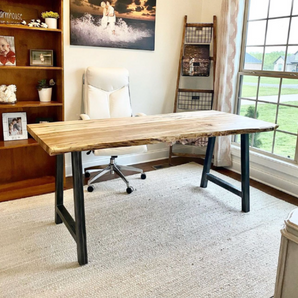A Detailed Check Out Table Leg Styles: Finding the Ideal Suit
Choosing the appropriate dining table leg design is essential for both visual appeal and functional performance. For those with bigger tables, trestle legs guarantee sturdy support, whereas barrette legs introduce a mid-century contemporary ambiance with their minimalist style. The x-shaped legs mix contemporary style with boosted stability.
Typical Four Legs
Among the different kinds of eating table leg designs, the typical four-leg design remains an ageless selection for several households. This classic configuration provides a harmonious blend of performance and visual appeals, making it a perennial favorite. Four legs offer balanced support, guaranteeing the table stays steady and efficient in bearing substantial weight. This is particularly beneficial for homes that often host large gatherings or utilize their table for numerous objectives, such as job or crafting.
From an aesthetic viewpoint, the typical four-leg style can be easily adjusted to numerous interior styles. Whether crafted from timber, metal, or a combination of products, these legs can be elaborately carved, streamlined and minimalistic, or anything in between. Their adaptability enables them to complement both rustic and modern setups seamlessly.
In addition, the simple structure of the four-leg layout assists in ease of activity and placement within a room. Unlike even more complex bases, this design reduces blockages, supplying ample legroom for restaurants. In summary, the typical four-leg dining table leg design marries withstanding sophistication with practical capability, making it an astute selection for those seeking both kind and function in their eating furnishings.
Pedestal Base
Often celebrated for its elegant and space-efficient style, the stand base is a prominent choice to the conventional four-leg arrangement in table leg styles. This distinct base usually includes a single central column sustaining the table top, which can vary in type, from ornately sculpted wood to smooth, modern-day metal. One of the main benefits of the pedestal base is its capability to make the most of legroom and seating adaptability. Without edge legs, diners are paid for higher liberty of movement, making it an optimal selection for round and oval tables that promote more intimate and inclusive celebrations.
The central column itself offers a canvas for detailed styles and artistic expressions, including an aspect of visual rate of interest below the table. In recap, the pedestal base combines capability with style, making it an improved and functional option for varied dining settings.
Trestle Legs
Trestle legs offer a durable and ageless structure for dining tables, identified by their horizontal cross-bracing and sturdy assistance beams. Originating from middle ages times, this design has actually evolved yet retained its essential framework, making it a perennial favorite in both standard and modern setups. The central trestle light beam, often supported by 2 or more vertical blog posts, offers outstanding stability, enabling for bigger table lengths without the demand for additional legs.
A substantial advantage of trestle leg tables is the adequate legroom they supply. Unlike tables with four edge legs, the absence of obstructions at the table's edges gives unimpeded area for chairs and restaurants, enhancing comfort and availability. This makes trestle tables perfect for fitting bigger celebrations, whether in sites a dining space or a reception hall.
The visual versatility of trestle legs is notable. Offered in a selection of products such as wood, metal, and composite, they can be finished to match a large array of indoor styles. From rustic farmhouse to sleek contemporary styles, trestle legs can be personalized to fit specific preferences. Their long-lasting allure and functional advantages make trestle legs a compelling choice for those seeking both style and practicality in their dining table.
Barrette Legs

The appeal of hairpin legs hinges on their simpleness and flexibility - dining room table legs. Readily available in a series of materials, consisting of steel and brass, they can be ended up in numerous colors to match various indoor styles. Whether coupled with a rustic wood table top or a modern glass surface, hairpin legs effortlessly mix capability with a touch of classic charm
Sturdiness is an additional remarkable function of hairpin legs. Despite their delicate appearance, these legs are crafted to birth significant weight, making certain the dining table remains stable and protected. Furthermore, they are fairly simple to mount, making them a preferred selection for do it yourself fanatics and specialist furnishings manufacturers alike.
X-Shaped Legs

Created from materials such as steel, wood, or a mix of both, X-shaped legs can be tailored to match different layout choices. Steel legs typically offer a sleek and commercial feeling, ideal for loft-style houses and modern-day eating spaces. On the other hand, wood X-shaped legs offer a warmer, much more rustic charm, ideal for farmhouse or eclectic interiors. The adaptability in products permits property owners to personalize their table to much better fit their overall design plan.
Moreover, the engineering behind X-shaped legs ensures even weight distribution, Read Full Report reducing the danger of tottering and boosting durability. This makes them particularly well-suited for larger table that require additional support. Essentially, X-shaped legs mix practical design with modern-day visual appeals, making them a timeless choice for diverse eating settings.
Verdict
An extensive understanding of eating table leg designs reveals the distinctive attributes and benefits of each layout. Trestle legs guarantee robust assistance for larger tables, and barrette legs introduce a mid-century modern-day aesthetic.